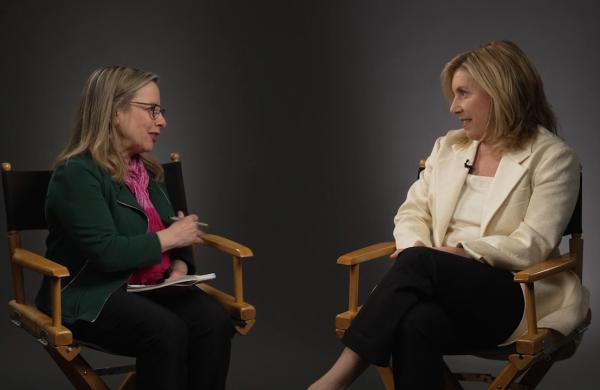“Success breeds complacency. Complacency breeds failure. Only the paranoid survive.” — Andy Grove, former Intel CEO
As my family, close friends and work colleagues know, my expertise is certainly not in technology. In fact, I am still challenged by replacing toner cartridges, much less updating my iPhone — which I finally just bought. That said, through the years I have learned enough about technology — and general business and investing cycles — to believe that Andy Grove was onto something important when he articulated that “success breeds complacency.”
In global macro and asset allocation, we at KKR believe that success in 2013 stemmed from an unwavering commitment to owning risk assets in size. As for 2014, we are sticking to our base call that risk assets will again outperform government bonds, albeit at a far slower pace than last year.
But Grove also correctly points out that “complacency breeds failure.” Now that we’re 58 months into an economic recovery — and a 155 percent return in the S&P 500 since March 2009 — we think it makes sense to assess whether we are beginning to see any noteworthy excesses, what Grove termed “complacencies,” building up in the global capital markets. We see a handful of other macro soft spots that we think are worthy of investor consideration at this point in the cycle. They are as follows:
• U.S. corporate margins are potentially extended; yet we have seen essentially no acceleration in capital expenditures. Present margins, while likely sustainable in the near term, suggest flat-to-negative earnings growth in the not too distant future.
Moreover, slowed economic momentum — which we think is the key variable, not the absolute level of margins — when it does occur, could cause earnings to fall much faster than gross domestic product. This is the exact opposite of what has occurred thus far in this economic recovery. In the long term we are even more concerned that U.S. companies appear to be overspending on buybacks and underspending on capital expenditures. In our view, this approach to capital allocation could have negative long-term implications for corporate earnings growth and, ultimately, valuation.
• Is the outlook for interest rates and inflation the new reality or is it too complacent? In the aftermath of the financial crisis, many of the assets held on the balance sheets of Fannie Mae and Freddie Mac have found their way onto the balance sheet of a more benign owner, the U.S. Federal Reserve. All told, mortgage-backed securities held by the Fed represent about 30 percent of the total MBS market, compared with a zero weighting in 2007. During the same period, the market share of holdings in government-sponsored enterprise portfolios has slipped to 5 percent from its peak of one third a decade ago. We believe this handoff is important, as it has crushed expected volatility in the fixed-income market. In fact, expected interest rate volatility has been in the 10th percentile over the past decade. With quantitative easing now reversing in the U.S., however, we wonder whether expectations for fixed-income volatility have fallen off the mark. A similar story holds true for inflation expectations, in our view.
• History suggests that Japanese consumption tax hikes are negative for both GDP and risk assets. With Japan increasing the consumption tax from 5 to 8 percent — the first hike since 1997 — we analyzed what history teaches us about the subsequent performance of the equity market, Japanese government bonds and the yen. Whereas the long-term effects of tax increases on consumption and nominal GDP are mixed, the short-term experience was quite similar in both 1989 and 1997: GDP contracted, and private consumption fell. The consumer price index also increased in the short term. In the long term, it was more difficult to draw conclusions on the pace and level of inflation. Following the consumption tax increases, Japan’s capital markets, particularly equities, saw sluggishness for four quarters. In all, Japan is certainly a global macro soft spot in 2014, as there is growing risk that Japanese economic structural reforms will fall short of investor expectations.
• Inflation in Brazil appears understated as growth already slows; significant risk to the real remains. In our view, Brazil’s inflation problems may run deeper than what official numbers suggest. Our base view is that the Brazilian government is suppressing regulated prices to hold down overall consumer price index trends, which are still breaching the upward bounds of the central bank’s targeted range. Moreover, higher inflation is happening at a time when we expect GDP growth to surprise on the downside. Overall, we think Brazil could become an even more challenging macro story in the quarters ahead, which underscores some of the secular challenges facing many emerging markets. If we are right, then we think investors may want to consider investments that benefit from a weaker-than-expected currency trajectory in emerging markets, especially Brazil.
So, what is our bottom line? Although the environment for risk assets has certainly been attractive since the market bottomed out in March 2009, the present economic cycle seems more seasoned in comparison. In this later stage, we believe macro excesses are forming. In the U.S., the margin situation is more difficult to assess. When GDP in the U.S. does slow, we expect profits to fall much faster. Meanwhile, in U.S. fixed income, investor sentiment appears to be somewhat blasé, particularly at a time when Fed policy is likely to be less accommodative.
In Japan we see room for continued economic disappointment. History shows that weak consumption trends are typically associated with weak equity market performance. Japanese authorities will need to assess whether more stimulus is required. Our strong view is it will be, but given high government debt levels, additional stimulus could create further instability in the country’s capital markets.
Finally, within emerging markets, we continue to view both China and Brazil as countries facing major structural issues. In the case of Brazil, our work shows that growth is likely to disappoint on the downside as inflation surprises on the upside.
Overall, though, we continue to believe that the present economic cycle will run through early 2017. Against this backdrop, we think that risk assets, particularly in developed markets, will continue to perform well. We believe these potential macro soft spots give investors much to contemplate when it comes to asset allocation. This is likely a good time to start thinking about how various stresses could affect overall portfolio performance in the quarters ahead. As the economic cycle matures, we believe excesses are building, many of which will likely act as potential catalysts or headwinds when the next downturn inevitably occurs.
Henry McVey is head of KKR’s global macro and asset allocation team.
See KKR's legal disclaimer. Get more on macro.






